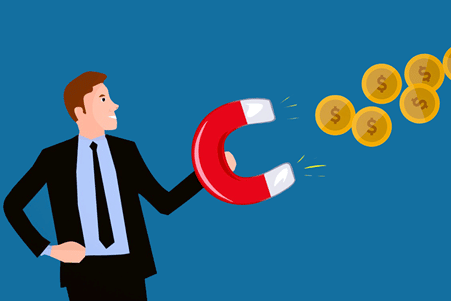As a general rule, a consumer buys something because he needs it or because he wants to solve a problem he has. Therefore, the objective of a person who is dedicated to the sale will be to make them aware of their problem and show them that their product can solve it.
Finding that concern of your ideal client may not be easy, but it is key to achieving conversions. Hence, identifying the pain points of your customers helps you boost your marketing strategy and get more sales in your business.
Next, we are going to explain what pain points are, how to detect them thanks to the customer journey map and what are the most common pain points in marketing with some examples.
What are pain points or pain points?
The pain points or pain points in marketing are not always related to a negative emotion or a feeling that causes pain to your client.
So ... what are they and what should you look for to be able to detect them? Let's see it in the following sections:
➽ Pain points in marketing: Definition
A pain point encompasses everything that worries or worries, positively or negatively, your target. Therefore, we can define pain points in marketing as follows:
Pain points in marketing refer to the wishes, concerns (these can be real or perceived), concerns or needs of your customers, which they can solve by buying your product or hiring your service.
➽ Customer journey map pain points: Definition
Now, now that you know that pain points can help you increase the sales of your business, it is important that you know how to identify those pain points and how to solve them.
For this, it is important to go deeper into the concept of customer journey map pain points, a tool that allows you to capture on a map what happens in the customer's mind:
- In what stage of the sales funnel you are (knowledge, consideration…).
- The interactions you have with the brand.
- The channels through which it passes from a point to reach your product or service.
In short, the customer journey is the journey that the consumer takes from the moment they come into contact with the brand or when they are already in the purchasing process. Analyzing this journey well will give you a lot of data that you do not know about your ideal client.
Thanks to the customer journey map, you will be able to have a clear vision of how your customer interacts with your brand (and on which channel), what feelings they have towards it and what improvements you can implement to offer them a good experience.
How to identify the pain points of your clients
Identifying the pain points of your clients or prospects will be a task that you must carry out as soon as possible. Because when you do, you will have advanced a lot.
Tips to specify the ideal profile of your client:
- Analyze them in your everyday life if you can relate to them.
- If your business is online, look at the comments they leave on social networks and blog posts (your own or on popular blogs related to your sector).
- Get into groups to find out what's going on (an interesting social listening tool is Metricool).
- Ask them directly what their preferences are in relation to what you offer in your business.
- Draw conclusions about the behavior of the people who visit your store (with analysis tools such as Google Analytics or statistics from the same social networks).
- Make a list with possible pain points, these may be that you are not targeting the right buyer, the customer service is bad or you do not distinguish yourself from your competition (in price or exclusivity).
>> For more information read: How to improve UX by analyzing traffic <<
Possible solutions to solve the pain points of your clients:
- Track your customer with a customer journey map pain points: It would be ideal if this follow-up was before, during and after the purchase. Perceiving what feelings they have about your product through the customer journey will help you reorient your content to alleviate their pain points at the right time.
- Communicate with other departments of your company: For example, the sales and marketing team is the one who knows first-hand what problems your customers have (they are looking for a cheaper service, comfort or simply need good support).
- Create a website and have a presence on digital channels: Through these platforms you will be able to get more potential clients and obtain interesting information about their needs and pain points. From here, you can create an editorial calendar to write down the preferences and concerns of your buyer; This will make it easier for you to segment and send the right content to the right person, at the right time.
Marketing Pain Points: Examples
Putting yourself in the shoes of your clients will give you the key to understand how they feel and how you could help them.
Here are some examples of more noticeable marketing pain points you may find in your customers:
1. Financial points
For example, a client has contracted a hosting, but this last year he is paying double what he paid when he contracted the offer. He feels like he is investing a lot and needs another, cheaper hosting service.
2. Points in the sales process
A customer is dissatisfied in any of the phases of the sales funnel and, therefore, he has not yet converted or if he has, he is not satisfied due to an error.
For example, a customer buys a plant in an online store that he wants to give to one of his friends for his birthday. The customer was unhappy because the plant did not arrive on time.
3. Support points
Finally, we want to point out another typical pain point such as customer service. Imagine that you have an ecommerce that sells household appliances. Customer service before, during and after the purchase is essential to boost the sales of your business.
In case the customer needs after-sales support, because he does not know how to use the washing machine he bought, if the service is terrible and he does not receive the help he needed, he could return his product and, in the worst case, not come back more to buy on that site.
CONCLUSIONS:
Knowing in detail what problems your customers have, not only will help you improve the percentage of sales of your company, but it will also feed those customers who converted to loyalty and repeat a new purchase process in your business.
Do not forget that it is just as important to make your client see that they have a problem, than to show them that your product or service is the best solution. And one of the best tools you have to enhance the benefits of your product, and that will improve the lives of your customers, is the copywriting.
What method did you use to identify the pain points of your clients?






